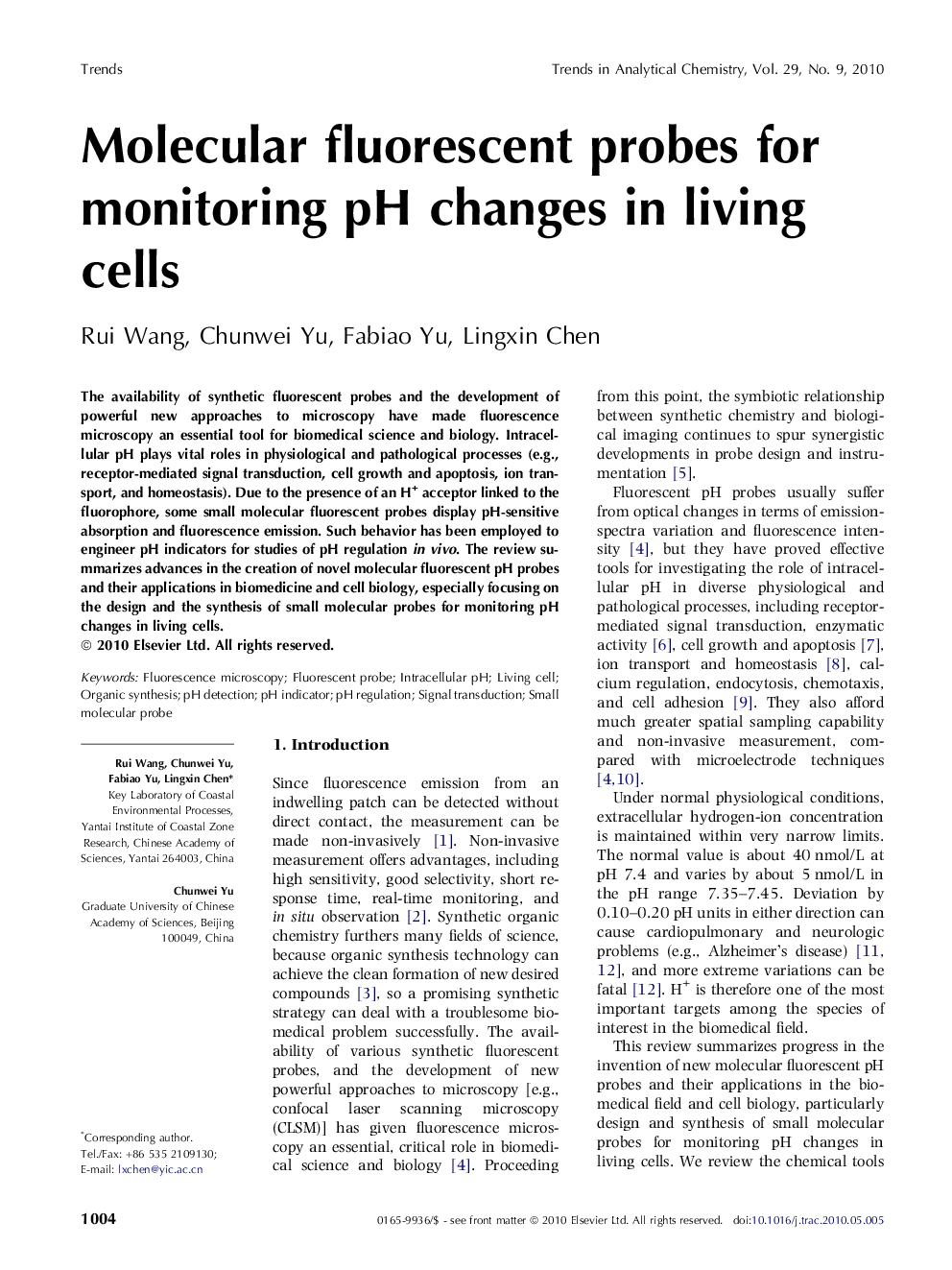| Article ID | Journal | Published Year | Pages | File Type |
|---|---|---|---|---|
| 1248308 | TrAC Trends in Analytical Chemistry | 2010 | 10 Pages |
The availability of synthetic fluorescent probes and the development of powerful new approaches to microscopy have made fluorescence microscopy an essential tool for biomedical science and biology. Intracellular pH plays vital roles in physiological and pathological processes (e.g., receptor-mediated signal transduction, cell growth and apoptosis, ion transport, and homeostasis). Due to the presence of an H+ acceptor linked to the fluorophore, some small molecular fluorescent probes display pH-sensitive absorption and fluorescence emission. Such behavior has been employed to engineer pH indicators for studies of pH regulation in vivo. The review summarizes advances in the creation of novel molecular fluorescent pH probes and their applications in biomedicine and cell biology, especially focusing on the design and the synthesis of small molecular probes for monitoring pH changes in living cells.
